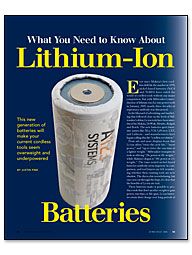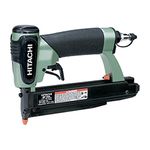What You Need to Know About Lithium-ion Batteries
This new generation of batteries will make your current cordless tools seem overweight and underpowered.

Synopsis: The next revolution in cordless power tools will be driven by lithium-ion batteries. Each Li-ion cell can pack three times the voltage into a cell of the same size and lower weight, allowing power-hungry and ultracompact tools to cut the cord. But trading in your reliable NiCd and NiMH tools for futuristic products like XLi, V28, LXT, LiPower, and Litheon comes with a steep learning curve and a hefty price tag. Assistant editor Justin Fink cuts through the marketing hype and tells you what you really need to know.
Ever since Makita’s first cordless drill hit the market in 1978, nickel-based batteries (NiCd and NiMH) have ruled the world of cordless tools without any major competition. But with Milwaukee’s introduction of lithium-ion (Li-ion) power tools in January 2005, nearly three decades of supremacy suddenly was threatened.
In the blizzard of advertising and marketing that followed close on the heels of Milwaukee’s debut, Li-ion tools have been introduced by Makita, DeWalt, Metabo, Ridgid, and Bosch. The new batteries sport futuristic names like XLi, V28, LiPower, LXT, and Litheon — and manufacturers have begun calling this the “cordless revolution.”
Print ads and store displays boast that Li-ion offers “twice the cycle life,” “more power,” and “up to twice the run time at a lighter weight.” Milwaukee trumpets its tools as offering “28v power at 18v weight,” while Makita’s slogan is “18v power at 12v weight.” The time-tested nickel-based batteries suddenly seem impotent in comparison, and tool buyers are left wondering whether their existing tools are now obsolete. The din is a bit overwhelming, but once you cut through the hype, it’s clear that the benefits of Li-ion are real.
These batteries make it possible to produce tools that don’t sacrifice weight to gain power, run time, or life span. Li-ion batteries retain their charge over long periods of dormancy and aren’t susceptible to memory problems. Maybe best of all, Li-ion could mean that the cordless circular saw will become as common as the cordless drill.
Higher voltage, longer run time, and deceptive labeling
When it comes to longer run time — the amount of work you get from a battery between charges — the fact is that any increase in voltage also increases run time, regardless of the type of battery. All things being equal, if you compare an 18v NiCd battery with an 18v Li-ion battery, both tools run about the same amount of time before needing to be recharged. Li-ion batteries don’t magically squeeze more work out of the same voltage; they just fit more voltage into a cell to begin with.
A cordless-battery pack is basically a protective case that contains a series of small, cylindrical cells. Each cell holds the same amount of voltage, and they work together as one unit.
Nickel-based battery cells, NiCd and NiMH for instance, each produce about 1.2v of electrical potential. So the 18v battery pack on your drill needs to link together 15 individual 1.2v cells to produce 18v. Yet a Li-ion cell of the same size produces about 3.6v, nearly three times the voltage. This means that depending on the type of Li-ion cell, you can make an 18v battery with as few as five cells.
For more photos and details, click the View PDF button below:
Fine Homebuilding Recommended Products
Fine Homebuilding receives a commission for items purchased through links on this site, including Amazon Associates and other affiliate advertising programs.

Code Check 10th Edition: An Illustrated Guide to Building a Safe House

Hitachi Pin Nailer (NP35A)

Not So Big House


























